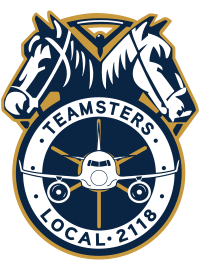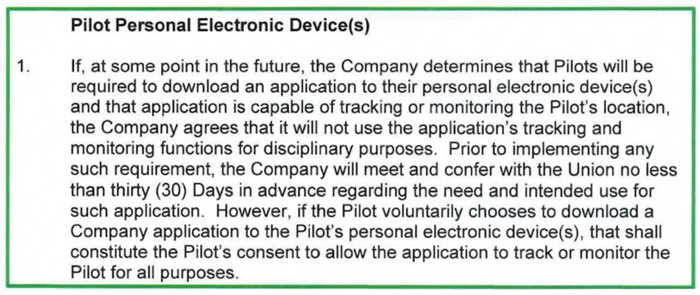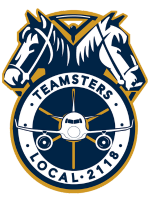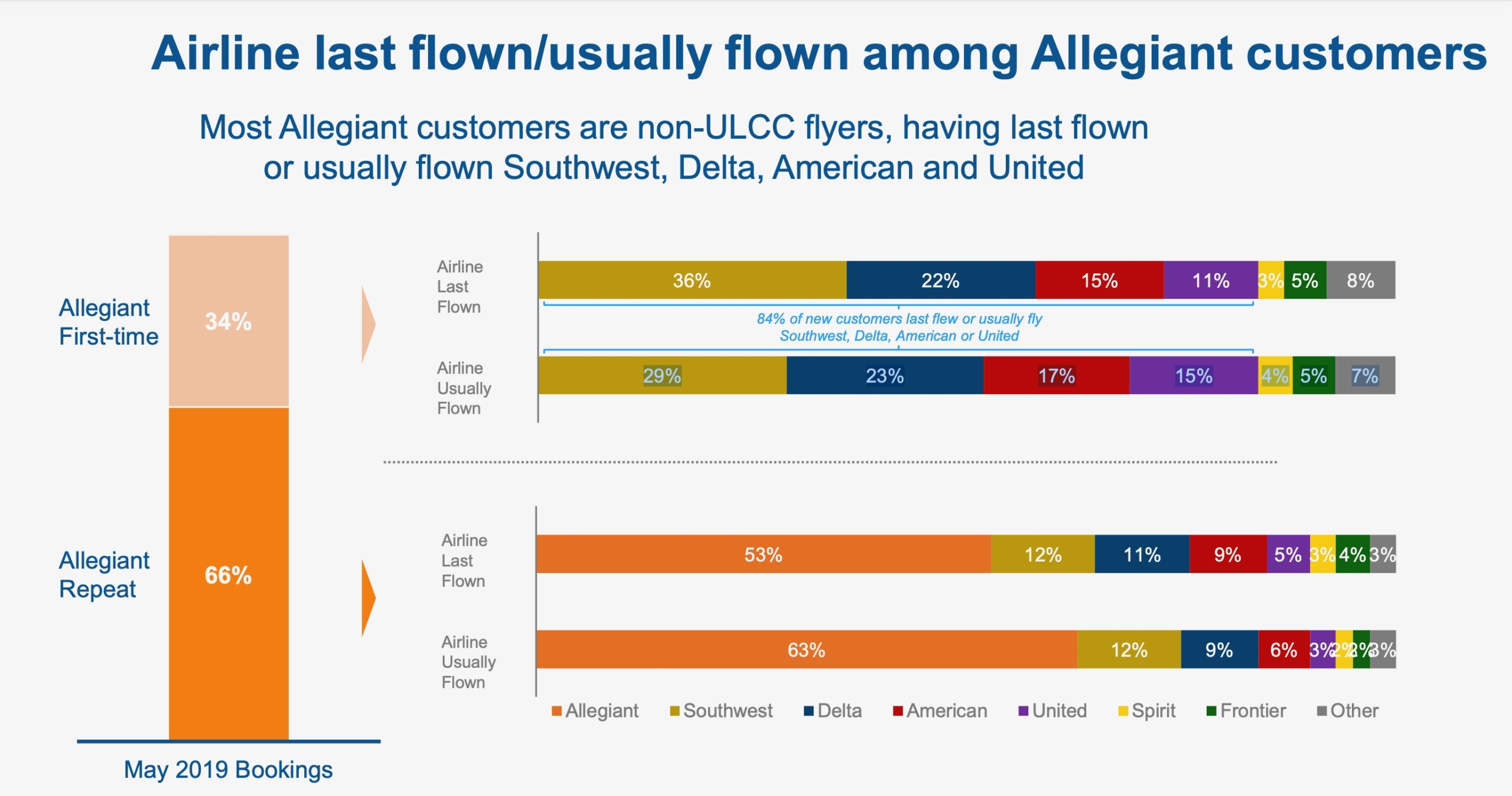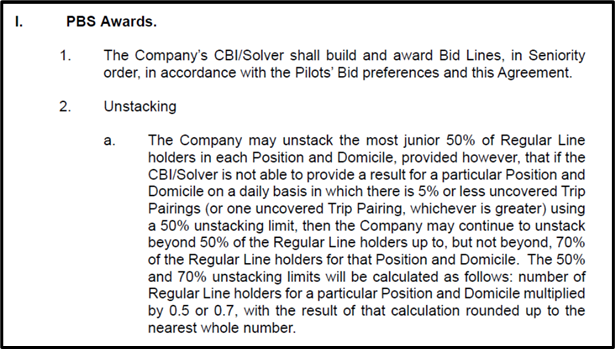| Fellow Pilots:
The Status of Bargaining
As we made clear in our previous updates, the parties remain at an impasse in negotiations. As a result, the Union has requested a status meeting with the National Mediation Board (NMB) and a proffer of arbitration. Consistent with its normal procedures, the NMB requested a response from management, which is due on May 13th, 2025.We will provide you with an update and additional information as it becomes available from the NMB.
Based on the way the Railway Labor Act (RLA) works, the next CBA will likely be the one you work under for more than five years after it is ratified. A fair, enforceable contract is non-negotiable. Your continued insistence on a contract that does not sacrifice your working conditions to achieve market-based pay, or vice-versa, remains the key to achieving this goal.
Flying Our Fair Share – IBT Opposition to Viva JV
It should come as no surprise that the IBT has written in opposition to the Viva Joint Venture since our U.S.-based aircrews have no guarantee of any portion of the block hours of this agreement, and management has made it clear that they are seeking no changes to our current scope language. In Allegiant’s response to the IBT’s filing, they lament the fact that they have been waiting “58% longer” for approval than the last Joint Venture application. See their language below:
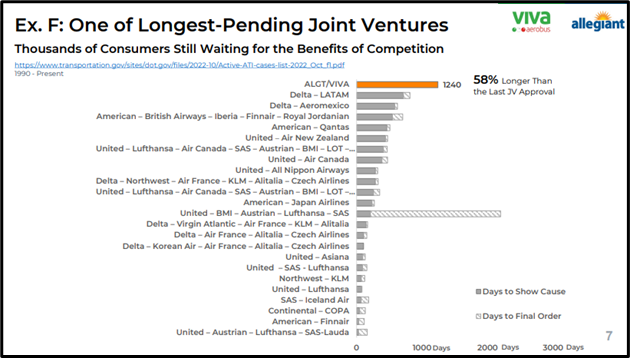
In perhaps management’s most ironic and tone-deaf public statement to date, they cry foul to the government and bewail about the length of time their unapproved application has been pending while negotiations for a fair pilot contract have raged on without substantive progress for over 4 years. Our peers have all managed to fly internationally with U.S. based pilots on their own metal. On the other hand, Allegiant management seems desperate to give international flying opportunities to foreign carriers – with no guarantee of a fair share of the flying and work rules that would allow them to slash 20% of the pilot force. No.
This Union will continue to oppose any flying venture that disproportionately rewards foreign or other carriers. Scope matters and your Negotiating Committee will continue to fight for your rightful share of any flying sold under the Allegiant banner. Allegiant flights = Allegiant pilots. When the Company agrees to industry standard unstacking rules, we can turn our attention to resolving the Viva JV in a manner that protects our job security and career opportunities.
The Truth About Unstacking Language
Unstacking, in its simplest form, is forced work and ignoring pilot preferences. While management’s Ministry of Truth will be busy over the coming weeks building an educational series to “tell you how unstacking works,” their efforts would be better served elsewhere. Virtually the entire industry already agrees—and their rules follow the same format and are nearly identical. Avoid management “truths” and read the language for yourself:
| Alaska |
Frontier |
| The Association member of the JPWG running the PBS solution may publish a bid run solution that uses Unstack/Coverage Award, utilizing a Maximum Stack Height of at least six percent (6%) of the actual number of Bid Block holders in each Base Position, provided that a Pilot: |
A bid run solution may be published that uses the following tools: Unstack, utilizing a maximum Stack height of no greater than five percent (5%) in a Large Domicile and eight percent (8%) in a Small Domicile of the actual number of Regular Lines in the Position, provided that a Pilot: |
| a. within the most senior fifty percent (50%) of Bid Block holders is not unstacked in a Bid Period that contains a day for which a Pilot receives Holiday Pay per Section 3.F; and |
a. Within the most senior fifty percent (50%) of Regular Lineholders is not Unstacked in the January, July, November, or December Monthly Bid Periods. |
| b. within the most senior seventy percent (70%) of Bid Block holders is not unstacked in a Bid Period that does not contain a day for which a Pilot receives Holiday Pay per Section 3.F; and |
b. Within the most senior seventy percent (70%) of Regular Lineholders is not Unstacked in the February, March, April, May, June, August, September, or October Monthly Bid Periods. |
| c. within the most senior ninety percent (90%) of Bid Block holders is not awarded a line through Secondary Line Generation (SLG). |
c. Within the most senior ninety percent (90%) of Regular Lineholders is not awarded a line through Secondary Line Generation (“SLG”). |
| Spirit |
jetBlue |
| A bid run solution may be published that uses the following tools: Unstack, utilizing a maximum Stack height of at least 5% of the actual number of Regular Lines in the Position, or 10% if there are 30 or fewer Regular Lines in a Position. |
The System Administrator may publish a bid run solution that uses the following tools:
Unstack/Coverage Award, utilizing a Maximum Stack Height of at least 3% of the actual number of Regular Lines in the Base and Status, provided that: |
| Provided that:
a. Within the most senior 50% of Regular Line holders, pilots are not unstacked in the January, July, November, or December Bid Periods. |
a. Within the most senior 50% of Lineholders, pilots are not unstacked in the January, April, June, July, August, November, and December Bid Periods. |
| b. Within the most senior 70% of Regular Line holders, pilots are not unstacked in the February, March, April, May, June, August, September, or October Bid Periods. |
b. Within the most senior 70% of Lineholders, pilots are not unstacked in the February, March, May, September, and October Bid Periods. |
| c. Within the most senior 90% of Regular Line holders, pilots are not awarded a line through Secondary Line Generation (SLG). |
c. Within the most senior 90% of Lineholders, pilots are not awarded a line through Secondary Line Generation (SLG). |
As you can see, the language and format is virtually identical. Major airlines have aligned on the necessary protections surrounding forced work and PBS – except Allegiant. Management has decided to completely reinvent industry-standard language, common behavior from them during these negotiations, which management uses to stall progress intentionally. A standout in Allegiant’s proposed language is how management uses the numbers 50% and 70% deceptively to appear like they are using industry standard provisions, except that the provision functions in the exact opposite way.
Unlike the rest of the industry which places hard limits on who cannot be unstacked (70% in normal months, 50% in holiday months), the Allegiant language says who can be unstacked. At least 70% of the pilots can have their preferences ignored every month, and in some cases beyond 80% thanks to a rounding clause does not present anywhere else in the industry. Every airline offers explicit and reasonable limits to protect seniority, Allegiant does not. Why?
Their proposal on unstacking allows the company to manipulate inputs to achieve far greater levels of forced flying, potentially your entire schedule, all while claiming “operational necessity.” False. As we have said before, high unstacking is not a requirement of the “peak flying” model, nor the “day trip” model, nor does unstacking have any linear correlation to percent working (i.e. you don’t need 80% unstacking to achieve 80% working, despite management’s repeated claims).
Beyond just the ‘unstacking’ percentage, we do not have any of the work rules surrounding unstacking to constrain it to any reasonable limits. Minimum staffing models, reserve restrictions, trip pairing and line construction provisions, trip mix protection by system and domicile, footprint rules, and reassignment protections are non-existent in their proposal. The very rules designed to protect your quality of life and keep forced work at bay are the very rules that management has continued to reject. To quote one manager, “if you don’t like your days off being Tuesday and Wednesday, then this airline isn’t for you.” To quote one company negotiator, “Your schedule will be predictable, your days off will be Tuesday and Wednesday.” Rubbish.
We reject the idea of perpetual forced work and a limited (and shrinking) inventory of days off selections. We reject the idea that only the top 20% of pilots get their preferences awarded. We reject the idea that your only days off will be Tuesday and Wednesday for the rest of your career. The rest of the industry has moved on from 1980s-style work rules and chosen to preserve seniority rights and preferences, limit forced work, ensure schedule fairness, and protect quality of life. Unilateral authority to destroy your quality of life in perpetuity is not acceptable.
Near Industry-Leading Productivity – Industry-Worst Work Rules
Based on feedback from our last message, our pilots continue to appreciate discussions centered around unimpeachable data and empirical evidence. For years, management has tried to convince you that your efforts are inferior to those of your peers—and that you should be willing to accept less as a result. The tried-and-true lines of “we’re different,” “our airplanes sit more,” or “those guys just fly more” don’t hold any weight. Fortunately for us (and unfortunately for management), data doesn’t care about feelings and rumors — and neither does the U.S. Department of Transportation (DOT). Consider the following DOT data from 2023:
| Carrier |
Block Hours Per Pilot (BHPP) |
Pilots Per Aircraft (PPA) |
| Allegiant |
495 |
9.0 |
| American |
455 |
15.9 |
| Spirit |
437 |
18.4 |
| Delta |
494 |
14.8 |
| United |
463 |
16.7 |
| Frontier |
496 |
16.7 |
| jetBlue |
508 |
15.6 |
| Southwest |
585 |
12.5 |
| Sun Country |
454 |
11.4 |
Figure: 2023 DOT BHPP/PPA Data
Despite the so-called “low-utilization” model, Allegiant pilots flew virtually the same or greater block hours per pilot than the majority of the industry. You achieved that output with the leanest staffing cushion in the industry (9 pilots per aircraft) with the weakest work rules and low pay as a reward. In fact, only Southwest has a higher BHPP with statistical relevance, and proof positive that incentivizing productivity works better than trying to achieve it through brute force and destroying your seniority rights.
As powerful as our BHPP is, other data points help to capture the actual effort our pilots exert to deliver industry-leading financial and operational performance. You should not be surprised to learn that Allegiant pilots are among the leaders in departures per pilot among major airlines, second only to Southwest.
According to DOT data, in 2023, Allegiant pilots averaged 15% more departures per pilot than the third-place airline, and had 34% more than Alaska, 61% more than United, and 31% more departures per pilot than JetBlue. Consider the following compiled from data provided by the DOT Bureau of Transportation Statistics (visit the source here):
| Airline |
Departures
(1,000s)
|
Pilots |
Dep/Pilot |
G4 % > Than |
| Allegiant |
116 |
1.128 |
103 |
na |
| Alaska |
268 |
3,473 |
77 |
34% |
| American |
1,145 |
14,952 |
77 |
35% |
| Delta |
1,120 |
13,543 |
83 |
25% |
| Frontier |
189 |
2,112 |
89 |
15% |
| Hawaiian |
84 |
1,117 |
75 |
37% |
| jetBlue |
348 |
4,414 |
79 |
31% |
| Southwest |
1,460 |
10,029 |
146 |
-29% |
| Spirit |
296 |
3680 |
81 |
28% |
| United |
912 |
1,4253 |
64 |
61% |
Example: Departure Per Pilot 2023
*pilot counts exclude instructors and trainees
Four years of near-record high productivity with well below industry work rules have provided a basis for funding everything except for a fair pilot contract, including the financially disastrous Sunseeker resort, financed family fun centers, golf courses, software companies, go-kart tracks, and executive bonuses.
While you operate more departures than your peers, often in less-than-ideal and challenging conditions, management believes it is obligatory that you capitulate now and accept worse-than-Spirit work rules (re-read “Mailer 2.0” if there is doubt). 4-leg days, non-towered airports, Larry Limos, outstation maintenance “adventures,” involuntary TDYs, base closures, and the like. The idea that you should capitulate to quality-of-life concessions in exchange for another decade of continuous abuse and degradation of your seniority rights is absurd. Management extracts above industry productivity from its pilots; the bill has come due.
The data continues to show that the “low pilot utilization myth” is false. The idea that the Allegiant pilot “does less and flies less” is not reality—the data proves it. The Allegiant pilot has done more, with less, and for longer than any other major airline pilot.
Management: we do not want your truth brochures, your flight crew appreciation socks, nor another shaving kit. The only “gift” that we want to see is a fair, enforceable contract.
Gallagher’s “Legacy” Dog Whistle
As Gallagher reminded us in the infamous “another f—ing airline” letter, the phrase “legacy work rules” is management’s favorite dog whistle. Management’s way of refuting fair, reasonable, market-based contract provisions is to falsely claim that such provisions would kill the company. The “legacy” moniker is an attempt to convince you that it is your Negotiating Committee that is being unreasonable by holding the line for a market-based contract without completely unnecessary concessions in scheduling, your seniority rights, and your quality of life.
“They want legacy” is a scare tactic to convince you that basic quality-of-life protections are an irresponsible and unreasonable ask by your Union, while funding failing hotels, sponsoring family race-car teams, and other pet projects is perfectly affordable. The truth is that work rules don’t bankrupt airlines, but bad management certainly does. No matter how “cheap” a contract is, the same executives who mismanage our company will still demand concessions until pilots say enough is enough (reference: current negotiations).
If trip rigs sink airlines, the rest of the industry hasn’t noticed. Industry-leading productivity deserves industry-standard protections. Legacy is simply management’s trigger word to convince you that you are worth less and should settle. No.
In Closing
The parties are at an impasse. We fully expect management to intensify their attempts to undermine the Union’s credibility and create division within our ranks. They do so to delay providing you with the contract you deserve. Managers will attempt to create controversies where none should exist (e.g., disparaging the Union for adding a committee member while their 13+ member negotiating team flies to bargaining sessions on private jets). You would be wise to ignore it. Division has no benefit for our pilot group.
Now is not the time for weakness—it won’t get you a contract quicker. It is more critical than ever for every pilot to stand tall, reject concessions, and demand that management deliver the contract you deserve. Beyond that, you must remain engaged. It’s easy not to care when you don’t think that something affects you until your base closes, or you’re forced into unproductive overnight trips to Bellville, IL, or Stewart, NY, or you’re the one furloughed or unstacked.
Even if you think you won’t be affected, you will be at some point. We must all demand that management deliver a fair and enforceable contract. Thank you for your support.
In Unity,
Captain Joshua Allen
Negotiating Committee Chairman
Captain Jay Killen
Pilot Negotiator
Captain Brad Keller
Pilot Negotiator
Captain J.R. Lynch
Chief of Staff
Captain Jim Cole
Recording Analyst
|
